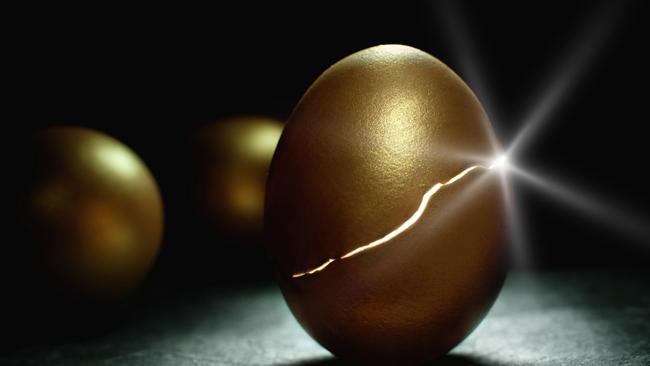Split call on whether spenders will outnumber savers after lockdowns ease
Consumer surveys suggest Australians aim to continue saving after lockdowns end, but the reality might be very different. The market has priced in spenders.

Either the majority of Australians are kidding themselves about how much they are going to save after lockdowns finish or the post-pandemic rebound is heading for trouble.
Australians are expected to kick off a major spending spree in the months ahead, the only problem is that when asked about their intentions, they are indicating a completely different point of view.
A key survey from the Financial Planning Association released this week reveals the biggest single issue for Australian investors over the next 12 months is to ‘‘hit a savings goal’’.
“The surprising result highlights a silver lining from the global pandemic as Australians focus on reducing frivolous spending and increasing savings,’’ the report suggests.
The FPA report follows a separate survey last week from Schroders which reported Australians intend to extend their saving habits once the pandemic restrictions are lifted.
Moreover, the Schroders report suggested the most enthusiastic savers will be Australians aged 38 and 50 – who ‘‘anticipate saving more post lockdowns’’.
But will intentions transfer to action? There is slim evidence to date, in fact the national savings rate has already been falling for months.
Having topped out at more than 20 per cent at the peak of the crisis last year, the rate dropped below 10 per cent in the last reading to September 30.
Similarly overseas economies are witnessing saving rates decline as economies open up and people resume consuming services outside the home such as hospitality and travel.
In the US the latest saving rate report saw the headline number fall to 9.4 per cent from 10.1 per cent in July.
In reality a further fall in the savings habit created by the pandemic will be key to the extension of a strong local sharemarket, where a consumer spending rebound in the lead-up to Christmas has already been substantially ‘‘priced in’’.
The RBA kept rates unchanged again this week indicating once more that it will not be lifting rates until 2024. Against that backdrop the major banks can also continue to keep saving interest rates at record lows: Most banks offer less than 1 per cent even on 12 months deposit arrangements.
“There just might be a disconnect between what people say their intentions are … and what might actually come to pass,” says AMP chief economist Shane Oliver. ‘‘We are seeing saving rates falling from the exceptional levels at the peak of the crisis and they are not expected to go back up again in the near future – if they did it would challenge a lot of assumptions in the wider market,’’ he said.
Historically Australian saving rates are low by international standards – long-term rates are closer to 7 per cent.
In fact we have one of the lowest rates in the world, saving only a fraction of the levels recorded in regions such as the EU where the rates are twice as high – the EU rate in the last reading was 20 per cent while the Australian rate was 9.7 per cent.
At National Australia Bank, director, economics, Tapas Strickland, is also sceptical about any serious extension of pandemic-era savings patterns. “We had lockdown-related issues over the last year, especially the practical difficulty of spending on services and the surge in government stimulus payments which was also beneficial to savings,’’ he said.
“We are now seeing this fall away – though we may well find there is some longer-term effect from the lockdown era. In fact I don’t think we will see rates go back down as low as they used to be. I think you’ll find they may be higher for some time.’’
There is also a view that stronger household accumulated savings will bolster confidence and actually underpin a lift in spending in the months ahead.
In a recent spending intentions report, CBA’s chief economist Stephen Halmarick said: ‘‘We now expect the additional savings inside Australian’s bank account to grow to $230bn (11.5 per cent of GDP) by the end of this year. This extra savings and the income being provided by the government should help the economy recover in 2022 and beyond.”



